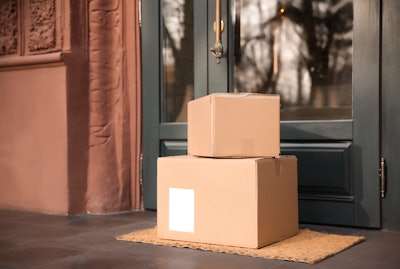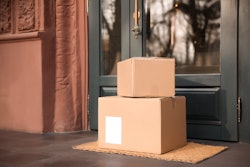
Same-day delivery is a natural progression in consumer expectations, as the convenience of online retail is integrated with the immediacy of brick-and-mortar stores. According to McKinsey, the market for same-day delivery is fueled by underlying macro-trends, including increasing GDP per capita, rapid e-commerce adoption, urbanization and changing consumer expectations.
Indeed, the Coronavirus disease (COVID-19) pandemic that began in 2020 led to rapid shifts in consumer spending, from services to goods, and to one of the fastest adoptions of e-commerce. As physical stores closed temporarily or for good because of government mandates and consumers’ hesitancy to shop in-person, IBM’s US Retail Index noted that the pandemic accelerated the shift away from physical stores to digital shopping by about five years.
As a result, retailers shifted strategies away from their physical stores to technologies that linked their virtual stores with their physical ones. In addition, more retailers offered same-day delivery services such as curbside pick-up and same-day delivery to customers’ front doors via partnerships with crowd-sourced delivery platforms.
Many retailers have introduced same-day delivery services. In fact, according to a survey conducted by Bringg, over two-thirds of retailers plan to have same-day delivery in place by the end of 2021.
Options, capacity and costs
Same-day deliveries provide additional last-mile options for customers depending on preference and daily need.
These deliveries also offer additional last-mile capacity and cost savings for retailers. In 2020, last-mile capacity was a major concern as many parcel service providers stumbled in on-time deliveries, and in some cases, cutting capacity due to overloaded networks. As a result, retailers diversified their last-mile provider mix, many turning toward regional small parcel providers and online crowd-sourced platforms.
Today, more last-mile options are entering the market. And, e-fulfillment providers have built out their own last-mile networks that offer options such as same-day deliveries via partnerships with local, regional and national last-mile providers to help provide additional capacity for their customers.
In terms of costs, there’s no better way than to offer real free shipping, that is, the customer comes to the store to pick up purchased goods. According to a study by Digital E-Commerce 360, in early 2020 only 6.6% of Top 1,000 chains offered curbside pickup, increasing to 8.1% by mid-2020 and by early 2021, it increased to 50.7%.
Buy-online/pickup-in-store (BOPIS) has also proven popular and often results in additional impulse spending.
Almost one in five online orders was picked up from stores in the first half of this year, up from 16.8% a year earlier, according to data from GlobalData.
BOPIS popularity is expected to continue through this year’s holiday season because of continued capacity constraints, poor on-time performance within last-mile and as a faster last-mile delivery option.
Technology’s role
Offering same-day or faster delivery service requires technology to provide visibility and management of inventory and last-mile services available. However, a Financial Times article states that for “retailers, which are still without a store pick-up service, however, launching one can be somewhat costly and surprisingly hard to execute because of labor shortages and the technology systems needed.”
Not necessarily true if one does their homework. There are a variety of technology providers from those that can offer an enterprise solution to those that can provide parts of the solution.
Regardless, same-day and less is here to stay, and if retailers want to remain competitive, they’ll need to not only offer it, but also maintain it with the most up-to-date technology(ies) available, including business intelligence tools in order to be proactive instead of reactive.



![Pros To Know 2026 [color]](https://img.sdcexec.com/mindful/acbm/workspaces/default/uploads/2025/08/prostoknow-2026-color.mduFvhpgMk.png?auto=format%2Ccompress&bg=fff&fill-color=fff&fit=fill&h=100&q=70&w=100)







![Pros To Know 2026 [color]](https://img.sdcexec.com/mindful/acbm/workspaces/default/uploads/2025/08/prostoknow-2026-color.mduFvhpgMk.png?ar=16%3A9&auto=format%2Ccompress&bg=fff&fill-color=fff&fit=fill&h=135&q=70&w=240)






